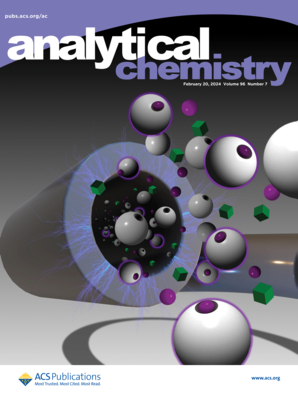Precise Conformational Tuning Facilitated by Tetrahedral DNA Framework Dimers for Enhanced Biomolecular Detection
IF 6.7
1区 化学
Q1 CHEMISTRY, ANALYTICAL
引用次数: 0
Abstract
Cellular systems achieve precise biomolecular recognition through dynamic regulation of molecular conformation and spatial arrangement, a complexity that is difficult to replicate in vitro, limiting advancements in biosensing technologies. The nanoscale programmability of tetrahedral DNA frameworks (TDFs) offers a compelling solution, enabling precise control over the spatial arrangement and conformation of nucleic acid targets, making TDFs highly effective for biosensor interface engineering. In this study, we developed dimeric TDF capture probes with tunable interprobe distances (25–45 nm), allowing for the precise stretching and ultrafast detection of single-stranded DNA (ssDNA) targets. By integrating auxiliary probes to modulate local target conformation, hybridization efficiency was significantly enhanced, yielding a 2.9-fold improvement in signal intensity. This approach was successfully applied to single-nucleotide polymorphism (SNP) detection, demonstrating a 2-fold improvement in discrimination sensitivity. Furthermore, integration with a microarray fluorescence chip enabled rapid and accurate quantification of IDH1 mutant allele frequency (MAF), highlighting its potential for glioma classification, disease monitoring, and therapeutic evaluation. These findings underscore the transformative potential of TDF-based interface engineering as a platform for high-performance biosensing and diagnostic applications.

四面体 DNA 框架二聚体促进精确构象调节,增强生物分子检测能力
本文章由计算机程序翻译,如有差异,请以英文原文为准。
求助全文
约1分钟内获得全文
求助全文
来源期刊

Analytical Chemistry
化学-分析化学
CiteScore
12.10
自引率
12.20%
发文量
1949
审稿时长
1.4 months
期刊介绍:
Analytical Chemistry, a peer-reviewed research journal, focuses on disseminating new and original knowledge across all branches of analytical chemistry. Fundamental articles may explore general principles of chemical measurement science and need not directly address existing or potential analytical methodology. They can be entirely theoretical or report experimental results. Contributions may cover various phases of analytical operations, including sampling, bioanalysis, electrochemistry, mass spectrometry, microscale and nanoscale systems, environmental analysis, separations, spectroscopy, chemical reactions and selectivity, instrumentation, imaging, surface analysis, and data processing. Papers discussing known analytical methods should present a significant, original application of the method, a notable improvement, or results on an important analyte.
 求助内容:
求助内容: 应助结果提醒方式:
应助结果提醒方式:


